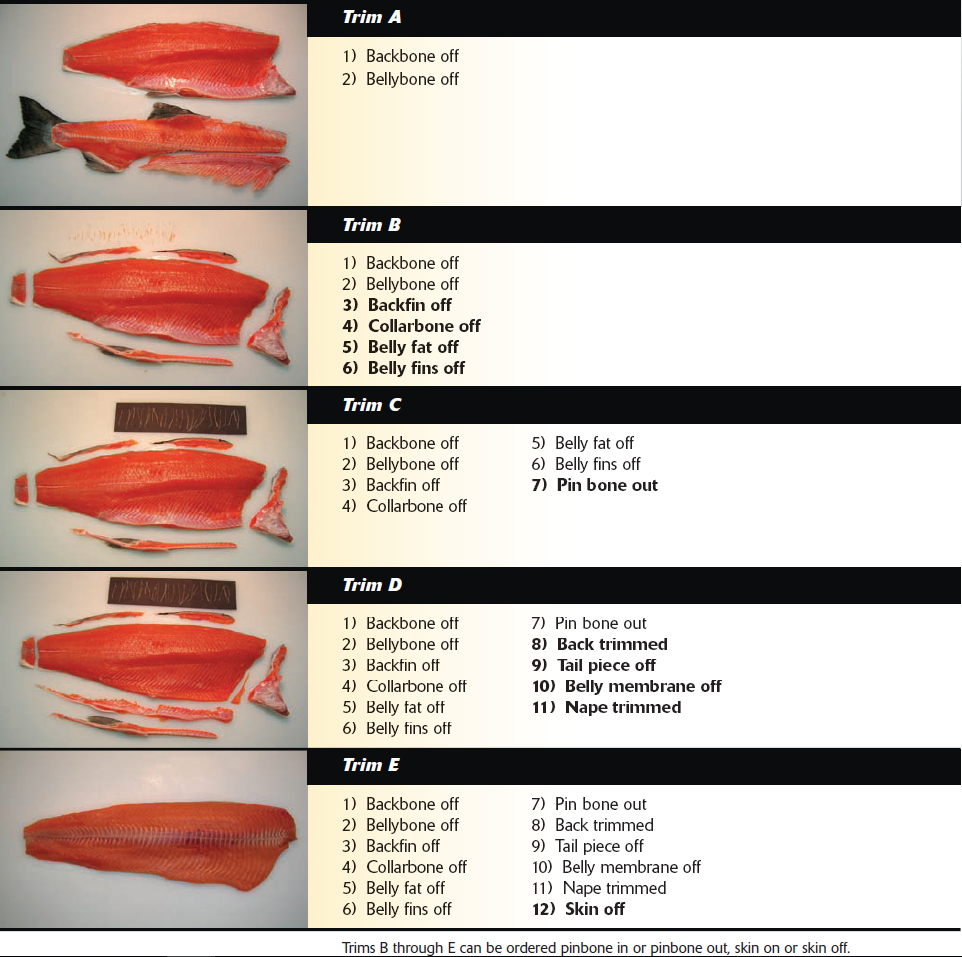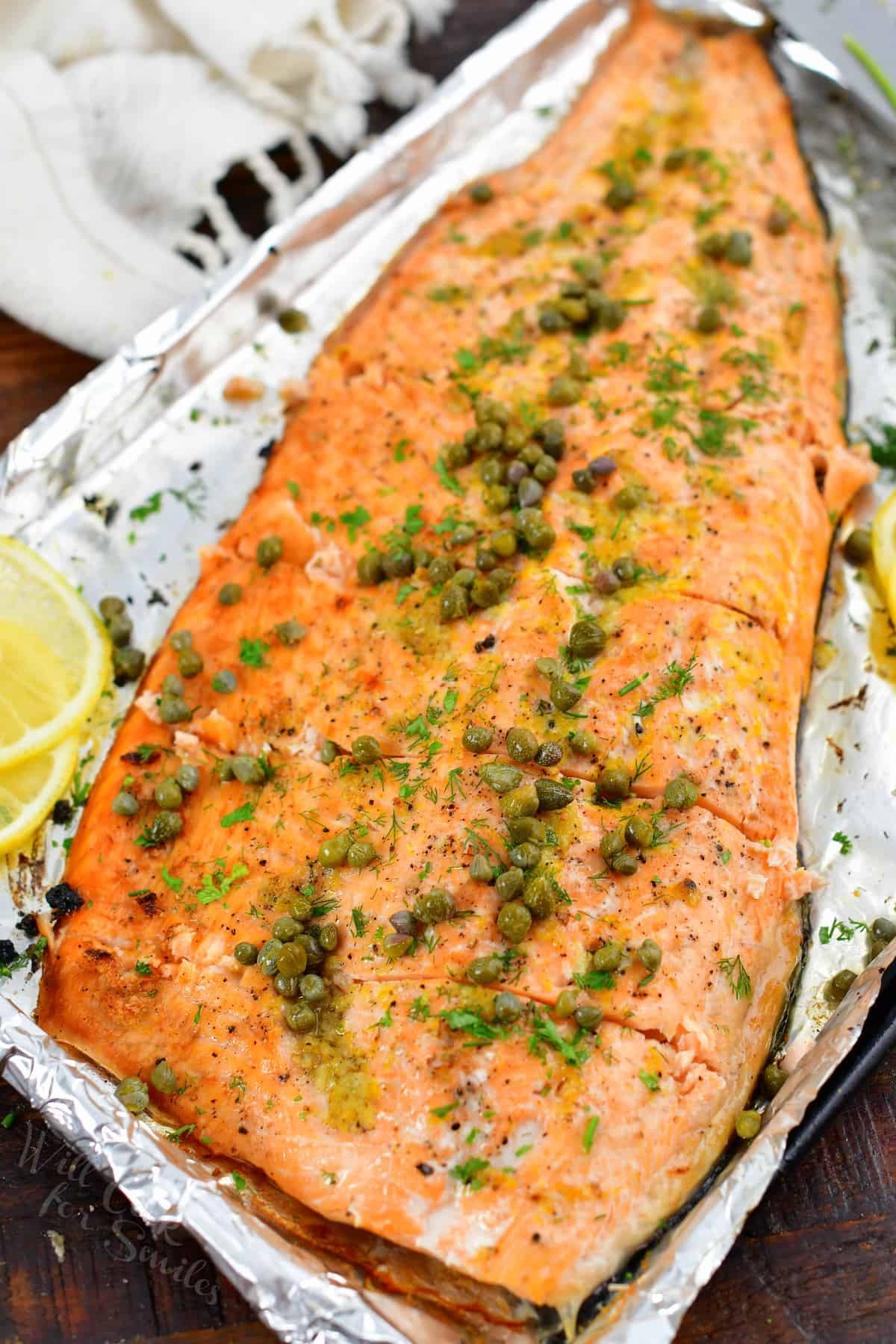Salmon fillets are a delicacy that many people love to cook and eat. Their rich, flaky texture and omega-3 packed nutrition make them a go-to choice for healthy and delicious meals. But when shopping for salmon fillets, it can be tricky to know exactly what size to look for, especially when a recipe calls for “1 salmon fillet” without specifying dimensions. In this comprehensive guide, we’ll explore the factors that determine salmon fillet sizes, provide portion guidelines, and share plenty of tips for handling these versatile cuts of fish.
Average Salmon Fillet Size
The size of a salmon fillet depends primarily on the species and origin of the fish. Here are some general sizing guidelines:
-
Atlantic Salmon – These farm-raised fillets typically range from 4-6 ounces and measure around 2 inches wide by 6-8 inches long
-
Sockeye Salmon – Wild-caught sockeye, also called red salmon, usually yields fillets of 5-8 ounces They tend to be a bit longer than Atlantic salmon
-
Coho Salmon – Farmed or wild, coho or silver salmon produces medium-sized fillets of 4-6 ounces.
-
King Salmon – The largest salmon species, these wild-caught Chinook salmon can produce fillets up to 12 ounces or even larger.
-
Pink Salmon – These smaller wild salmon provide petite fillets of around 3-4 ounces.
So on average, a standard salmon fillet is 4-6 ounces, with more variance in sizing among wild salmon species The cut of the fillet matters too – center cuts will be thicker than tail sections.
Portion Guidelines
-
A 6-8 ounce salmon fillet is considered one restaurant-sized portion.
-
For a typical home-cooked meal, plan on 4-6 ounces of salmon per person.
-
A 3-4 ounce fillet is suitable for a salmon salad or appetizer.
-
Canned salmon is usually 4-7 ounces when drained.
-
Pre-portioned frozen salmon fillets typically come in 4, 6, or 8 ounce sizes.
Always check weights when buying pre-packed portions to ensure you’re getting the right amount of fish for your needs.
Biggest Factors in Salmon Fillet Size
Species – As shown above, some salmon species naturally grow bigger and produce larger fillets. King salmon reigns supreme in size.
Wild vs Farmed – Wild salmon generally yield smaller portions since they grow naturally. Farm-raised salmon are fed diets optimized for fast growth.
Cut of the Fillet – Center cuts will give you the biggest, meatiest portions. Tail cuts are much thinner.
Age and Gender – Older fish and breeding females tend to be larger.
Fat Content – Fattier salmon looks plumper in size and weighs more.
Handling and Preparing Salmon Fillets
Now that you know target salmon fillet sizes, here are some tips for working with these amazing fish cuts:
-
Inspect fillets for bright coloration and shiny, firm texture. Pass on dull or mushy spots.
-
Store wrapped tightly in the coldest part of the fridge for 2-3 days max.
-
Thaw frozen fillets overnight in the fridge before cooking.
-
Remove pinbones with tweezers or needle nose pliers before cooking.
-
Skin before or after cooking based on your preference.
-
Brush with oil and season as desired. Lemon, dill, garlic, and pepper are classic combos.
-
Baking, grilling, broiling, poaching, and pan searing are all excellent cooking methods.
-
Cook until opaque and flaky, around 145°F internal temperature.
-
Take care not to overcook – salmon gets dry if cooked too long.
Now that you know what to expect in terms of salmon fillet sizes, portions, and prep, you can shop for these healthy fish fillets with confidence. Remember that a standard 4-6 ounce serving provides a good meal for one. Seek out high-quality wild-caught or sustainably farmed salmon for the best texture, flavor, and nutrition. With the proper handling, salmon fillets will shine as the star of your dish!

What Sides To Serve With Salmon
DID YOU MAKE THIS RECIPE? PLEASE leave a star rating! Let me know how you liked it by leaving the comment below or share and tag me on social media @willcookforsmiles. DON’T FORGET to subscribe to my newsletter!

How Much Salmon Per Person
A whole salmon filet will usually weigh in right around 2 lbs., give or take a few ounces. When planning a dinner, I always aim for 1/2 lb. of salmon per person. So a 2-pound filet will yield 4 servings. You can always make more filling sides to go along with it and may be able to get 6 servings out of the whole filet. If you are feeding a larger crowd, it’s better to get two whole filets.
How to Fillet a 20lb. King Salmon…Quick and Efficient!
FAQ
FAQ
What does a 3oz salmon fillet look like?
The standard serving size for any variety of meat or fish is 3 ounces. Rather than weighing this out, the best visual indicators of this amount is roughly the size of the palm of your hand or the size of a standard deck of playing cards.
How many ounces is 1 salmon fillet?
Our Wild Sockeye Salmon fillet is 6-8 ounces each. We recommend 6-8 ounces raw weight per person when serving fish fillets and steaks.
Is 4 ounces of salmon too much?
What Does a Serving Size for Salmon Look Like? Key takeaways: A typical serving size for salmon is between 3 oz to 4 oz for adults.Oct 11, 2023
What is a portion size of salmon fillet?
1 6oz (180g) fillet per person is a normal portion with sides.
How big is a salmon fillet?
Salmon fillets are a popular choice among seafood lovers due to their rich flavor and versatility in cooking. The size of a salmon fillet can vary depending on the species of salmon and the cut of the fillet. Typically, a standard salmon fillet measures around 6-8 ounces, but it can be larger or smaller based on individual preferences.
How many Oz is a salmon fillet?
Individual fish size – Larger salmon yield bigger fillets. So while there is variety, the typical salmon fillet size is around 6-8 oz for popular Atlantic salmon and Coho. How Many Ounces per Serving? The recommended portion for a salmon fillet is 6-8 oz per serving. This provides:
How big is an Atlantic salmon fillet?
Atlantic salmon, also known as Salmo salar, is one of the most common types of salmon available in markets. The average size of an Atlantic salmon fillet ranges from 4 to 6 ounces. These fillets usually measure around 2 inches in width and 6 to 8 inches in length.
How big is a pink salmon fillet?
These fillets are typically 2 inches wide and measure between 6 and 8 inches in length. – Pink Salmon: Pink salmon is the smallest species among Pacific salmon. The average size of a pink salmon fillet ranges from 3 to 4 ounces. These fillets are usually around 1 inch wide and measure between 6 and 8 inches long.
How big is a sockeye salmon fillet?
They are typically around 2 inches wide and measure between 6 and 8 inches long. – Sockeye (Red) Salmon: Sockeye salmon fillets are known for their vibrant red color and rich flavor. The average weight of a sockeye salmon fillet is around 5 ounces. These fillets are typically 2 inches wide and measure between 6 and 8 inches in length.
How big is a chum salmon fillet?
These fillets are usually around 1 inch wide and measure between 6 and 8 inches long. – Chum Salmon: Chum salmon, also known as Keta, has an average fillet weight ranging from 4 to 6 ounces. These fillets are similar in size to Coho salmon, measuring around 2 inches wide and between 6 and 8 inches long.
